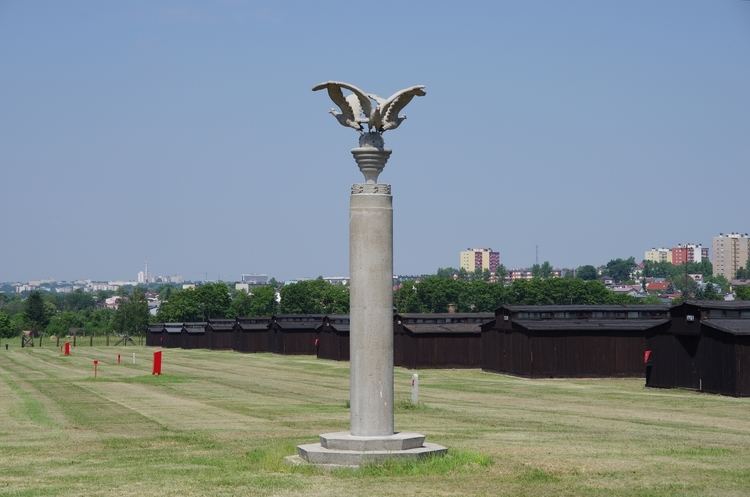Name Maria Boniecki | Died 1995 | |
 | ||
Similar People Umberto I of Italy, Dirck Helmbreker, Jan Ksawery Kaniewski, Rosa Vercellana, Ugo Bassi | ||
Maria Albin Bończa-Boniecki (1908–1995) was a Polish artist. A survivor of the Nazi concentration camp Majdanek, he emigrated to the United States of America in 1957.
Contents
- Early life
- World War II
- Post war
- Solo exhibits
- Permanent works available in public space
- Military awards
- References

Early life
Boniecki's father, a Polish patriot, was deported to Siberia when Boniecki was five. Boniecki's mother chose to follow with her children. The circumstances following the Russian Revolution produced an opportunity for Boniecki, his mother and his siblings to slip away. With much difficulty they found a way to Poland, arriving in 1921.
Boniecki studied at the Academy of Fine Arts in Warsaw, and graduated in 1929. He produced many sculptures before the war, notably Birth of Thought, presently held at the National Museum, Warsaw. He was awarded a permanent membership of Zachęta, the Polish Masters National Museum of Fine Arts.
World War II
After the war broke out, Boniecki joined the Polish underground resistance. In 1939 he worked as a volunteer medic, and from 1940 to 1942 took part in counterintelligence in Warsaw, Sub-district II under the pseudonym "Adam".
He was arrested by the Gestapo in October 1942 and imprisoned and interrogated at the infamous Pawiak prison. Thence he was sent to Majdanek concentration camp.
Despite being a subject of Nazi experiments and appalling conditions at the camp, Boniecki continued fashioning sculptures out of whatever he could find to encourage hope and endurance in his fellow prisoners, and in memory of those murdered. His heavily symbolic sculptures included:
When presented with an opportunity, Boniecki proposed a sculpture of three eagles to the camp officials, who accepted the offer, believing the eagles were a German symbol. But the Three Eagles Mausoleum that he produced symbolized, among other things, the freedom of Poland, brotherhood, and triumph. Some human ashes of the victims of the gas chambers were secretly placed within the sculpture.
The Three Eagles Mausoleum was destroyed after the war and a reconstruction was created in 1962 by Stanisław Strzyżyński, by order of the Polish government and against Boniecki's wishes. This reconstruction (see External links) remains on display at the Majdanek Museum.
At the same time, Boniecki was the chief of section V of Wachlarz, and gathered information within the camp for delegates of the Polish government-in-exile. Information was smuggled in and out of the camp routinely.
With the help of the Polish Home Army, Boniecki escaped in 1944 and, rather than fleeing the country, resumed his counterintelligence activities. He took part in the Warsaw Uprising and was again captured by the Nazis. He passed through the German prisoner-of-war camps at Lamsdorf, Gross Born, and finally Sandbostel, where he was liberated by British forces.
Post-war
Boniecki settled in Paris where he met his wife Krystyna Boniecki (née Binental), also an artist. They continued sculpting and painting, and also developed educational toys for children, among them a tactile alphabet for the blind.
In 1957 the couple moved to Denver, USA, and became US citizens in 1964. Later they moved to Tulsa, Oklahoma.
